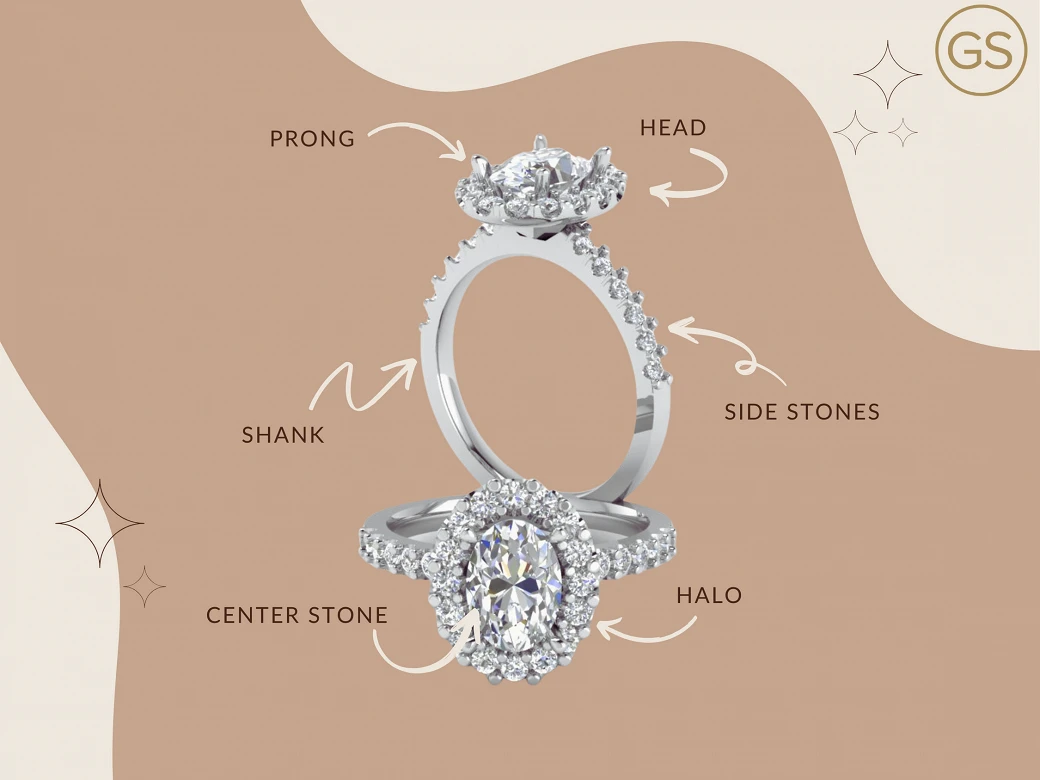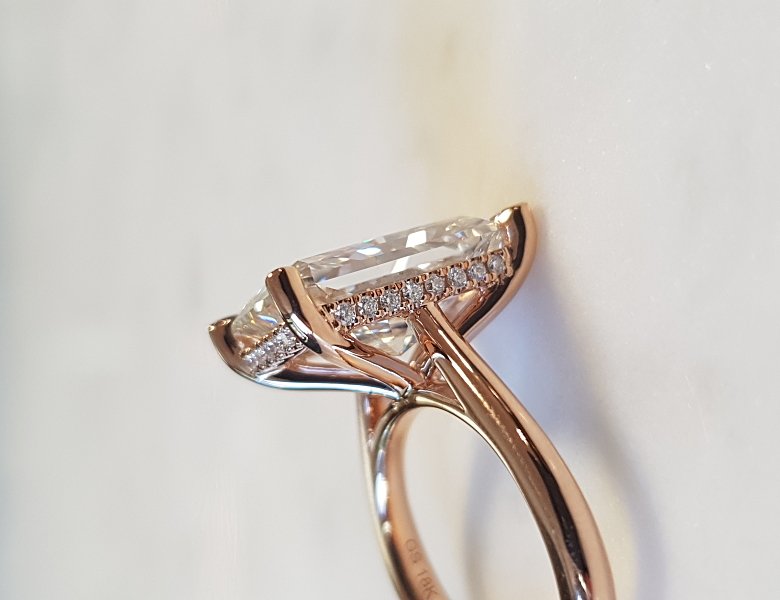
Can’t wait to start shopping for your ring? Well, read through this guide below and start your quest.
Spring is coming shortly and it is a time for many of lovers and romantics to start thinking about the future. You like the lady, she likes you back and you are thinking of kick-starting a relation. Well, there is no better way to do so than the presence of a beautiful engagement ring. The ring would store all of your feelings and love for your partner and transfer it for them to possess for the rest of their life.
Considering how important this purchase can be, we realize why you’re sweating and getting nervous before buying the ring. This is an important decision in your life, and you need to be sure shot with what you’re buying for the best results. As part of this struggle, you wouldn’t want to go ring shopping for your proposal, without complete clarity in your mind. You would want to know everything about what makes a wonderful ring, and how you should go about the procedure.
Knowing the lack of sufficient information for most men in this regard, we have made a complete guide on the anatomy of a perfect ring. Here we look to dissect what a perfect ring should look like, and will guide you towards the purchase. With information from this article in your mind, you will end up making better decisions for the future.
Can’t wait to start shopping for your ring? Well, read through this guide below and start your quest.
Ring shopping begins quite in advance for all couples. Popping the question might sound like a small step, but it takes often weeks or months of planning. From deciding where to ask the question, to picking the ring, every question poses an intrigue of its own.
Considering that you’re new to the world of rings, you will face a lot of complex questions and terms in the world of ring shopping. Picking out a ring that perfectly meets your expectations is really hard and way tougher than it looks from outside.
The shank refers to the curve around the ring or the spherical band that will wrap your fingers when you wear the ring. The shank is an important part of the ring, as it can influence in positive or negative way on the value of the stone that you have set in the middle of the shank. Most people are so concerned with the quality of the stone without paying an attention on the shank and the material it is made of.
It also contains some other components of the ring such as side stones, bridge, and shoulders, which we would describe in the article below. The shank for a ring comes in numerous styles and patterns, and you can go with the one that you like the most.
Rings sold all over the world are required to be stamped with the content of their metal. The stamp is referred to as the hallmark in the jewelry culture for British English. The stamp is meant to identify and clear the carats within the metal that the ring comes with.
So, whatever ring you come across is probably going to have a stamp on it. Stamping got its name from the process of using a hammer and a stamp to engrave the numerical identifying the purity of the metal. This process has dwindled down, as jewelers now write the contents of the ring on the shank with the use of an engraving machine.
Some jewelers also engrave designer insignias and names on the ring. You can also have a personal message of love engraved on the ring for future purposes.
It is on your discretion to have a primary stone or three stones of your liking on the top of the ring: you always have a choice to accentuate the curve of the ring through choosing this style. It is reflected through the other stones on your diamond ring, which are wrapping the band, other than the center diamond itself.
These side stones are placed across the surface of the shaft and are used to accent the ring’s appearance, without being the focal point and stealing all of the attention. Such type of rings are usually shiny and small, underlining the appearance of the ring, without making a compromise with the shape, size or quality of the ring.
Discuss your possible types of side stones with the jeweler beforehand and choose right combinations and models, most suitable for your bride’s personality. Your jeweler will let you know the list of the best options, basing on your request and would help you select the best options most suitable for you.
The shoulders of your ring are the top part of your ring, which is important to pay attention to. It is usually the area present at the top of the shank. This area has a goal to meet the head of the ring, holding the stone and making an impression of whole ring. The shoulders need to elevate the diamond stone in such a way that it doesn’t pull apart from the ring, but still maintains its dominance over the rest of the shaft, looking sophisticated and overwhelming.
The best characteristics of this style in this regard is the cathedral style, as it places the stone in the shape of a dome. Heavy diamond stones work well with the cathedral style, having the distinctive massive shoulders, which emphasize the significance and beauty of the ring.
There are different styles of the engagement rings, peculiarities of which you can find out, following the website: www.gsdiamonds.com.au.
It is the most important part of an engagement ring after the stone itself. The head is important for holding the center stone, determining its longevity, keeping it in the best and safe condition. Overall look of the ring does not depend just from the diamond: it is in most cases the design and model of the head that creates an impression that you would want to set with your ring.
The design for your head can be set based on the preferences and your taste, taking into account relevant trends and her favourite types. There are numerous lists of stylish options to be trendy to choose from, including the most popular of a prong for the head. It goes perfectly with the cathedral shoulders, which we have already mentioned above.
So, once you have finalized choosing your stone and style of the ring, have an experiment to combine a cathedral-like shoulders with a prong head to get a sizable combination.

Also known as a 'gallery rail', serves as a slender bridge connecting the prongs of a ring setting.
The purpose of the safety bar is to provide additional support and security by acting as a stabilizing element, bridging the gap between the prongs and effectively reducing the chances of the stone shifting or coming loose. By adding this extra layer of protection, the safety bar helps to safeguard the integrity of the ring and minimize the risk of the center diamond becoming loose with wear and tear.
When diamonds or other gemstones are set along this bridge, it transforms into what's known as a hidden halo.
The mounting is basically the entire ring (without a center stone). It can be Plain or Side Stone engagement ring, fully on your discretion. Often this is also referred as a setting.
To understand Anatomy of the ring you need to know about other parts of an Engagement ring, one of which among it is Prongs, which make up most of the Head of an engagement ring: they go from the very tips of the points, all the way down to the base, types of which you can find out independently.
Having understood the most important parts of a perfect engagement ring anatomy, you’re all aware about the major tips how to buy your perfect engagement ring.
Prongs make up all of the head. They go from the top till all way down to the base. These are the parts of the Head that come up on the sides of stone, wrap over the top not allowing them to fall out. There are different types of Prongs, the most significant of which are 4 Prong, 6 Prong, V-tipped Head, Tulip Head, Basket Headm etc.